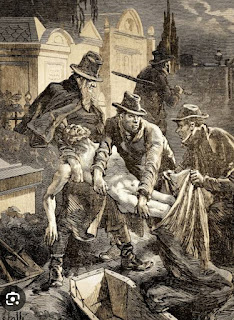They robbed graves and got away with it—until some turned to murder... Daily Brutality
When a poor person’s body was laid to rest in Britain during the 18th and 19th centuries, there was a good chance it had no rest at all. Rather than settling into an eternal sleep beneath the earth, their bodies were dug up and carried away to the operating theaters of medical schools and colleges. There they were dissected by surgical students learning anatomy and practicing operations they would later perform on living patients.
Digging up the dead could ruin a reputation, but there were trades people who specialized in providing cadavers for doctors in training. They went by many names: body snatchers, grave robbers, resurrectionists. Although their efforts may have advanced the understanding of the human body, their work largely targeted the indigent, whose mortal remains were violated when the market demanded it.
Changing time
While industrialization transformed the burgeoning populations of Britain’s major cities, medical science was undergoing a metamorphosis of its own. In the 1790s there were some 300 medical students in Edinburgh and London, the centers of medical study in Britain. By the 1820s numbers had increased to over 400 in Edinburgh and nearly a thousand in London.
Students expected to dissect as many as three cadavers, which continually increased the demand for “fresh” bodies for anatomy classes. Parisian schools at the time had an effective system in place to ensure enough cadavers for each student.
Thanks for reading leave your thoughts in the comments section below
Read more on our Rare History Channel











Comments
Post a Comment